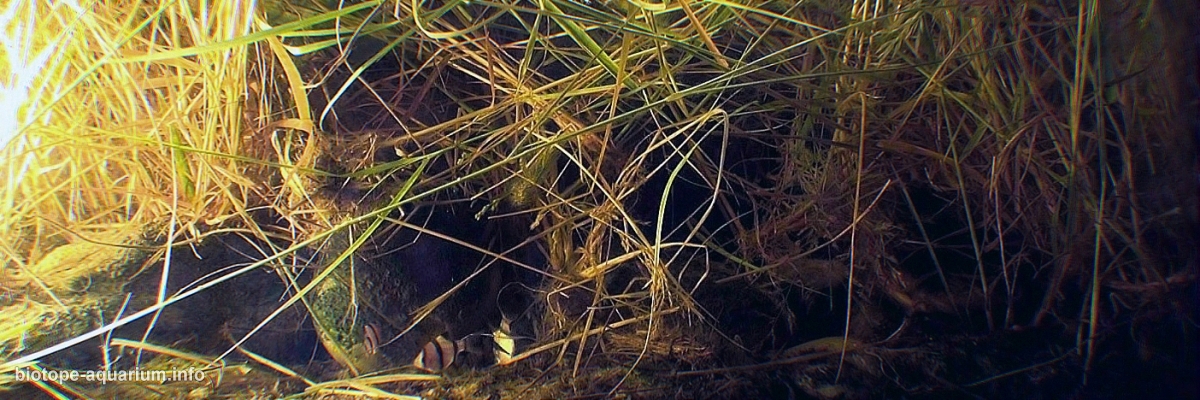Mekong River, Nakhon Phanom province, Thailand
118th place in Biotope Aquarium Design Contest 2019
Georgia. Giorgi Khizanishvili

Volume: 100 L
Dimensions: 65x44x35 cm
List of fishes: Puntigrus partipentazona
List of plants: N/A
Description of decorations: Cynodon sp
Description of equipment: Filter RS Electrical RS 702 QMAX 1500L/H 18W, Incandescent lamp 2×100 Wt.
Water parameters: Temperature: 24°C. pH: 7.0.
Additional info: –
INFORMATION ABOUT BIOTOPE
Description of the area surrounding the biotope: The Mekong River is a river in the south-east of Asia. It flows through many countries: China, Burma, Thailand, Laos, Cambodia, and finally Vietnam. The Mekong begins in the Lasagongma Spring which is in the plateaus of Tibet, disputed part of China, and flows about 2,703 miles (4,350 km) south-east to the South China Sea. Its watershed covers 307,000 square miles (797,000 square kilometers). Its name comes from the Thai language’s Mae Num, or literally, “Mother Water”. The Mekong River is the 12th longest river in the world, flowing from high up in the Tibetan Plateau, all the way to the South China Sea, some 4,500 km from its source. It drains an area of almost 800,000 km squared and traverses multiple countries, including China, Myanmar, Laos, Thailand, Cambodia and Vietnam. The Mekong forms an important point of connection and unification between the region’s countries and its diverse peoples, landscapes and cultures.
Description of the underwater landscape of the biotope: The Mekong River carries soil, washed from the Himalayas, into the lake. The substrate is sandstone, fine sand of yellowish-gray color. During the rainy season, the water floods vast areas of the rainforest, therefore there are many branches, drifts, fallen leaves in the water, and the bottom is covered with organic matter and silt. This creates a unique look of the lake.
Description of the parameters of the habitat: In the rainy season, when the water rises by 8 meters and the lake increases by 5 times over the area, whole underwater forests are formed. The lake water is turbid, dark in color. When the lake is dry, the water has a yellow-brown color. The shallow water is covered with mud and a thick layer of silt, washed out by the Mekong River during the rainy period. During the rainy season, tree trunks and tangled roots create conditions for spawning for numerous species of fish, some of which come from the Mekong River. On the surface of the water there are common aquatic plant colonists from South America: water hyacinth. There are almost no other aquatic plants, as well as lower algae. When the volume of water in the Mekong decreases and the water begins to go down, the Tonle Sap river changes direction and begins to flow towards the Mekong. The lake begins to shallow, and the “black fish” prepares to wait out a period of drought in the mud, the “gray fish” moves to numerous tributaries, and the “white fish” returns to the Mekong and goes upstream. During the dry period, the water temperature rises to 30°C, the amount of oxygen in the water decreases sharply, therefore only a double-breathing fish remains in the lake. These are the most characteristic and integral elements of a biotope.
List of fishes and invertebrates occurring in the nature biotope: Puntigrus partipentazona
List of plants found in the nature biotope: Cynodon sp
Threats to the ecology: –
Sources of information:
